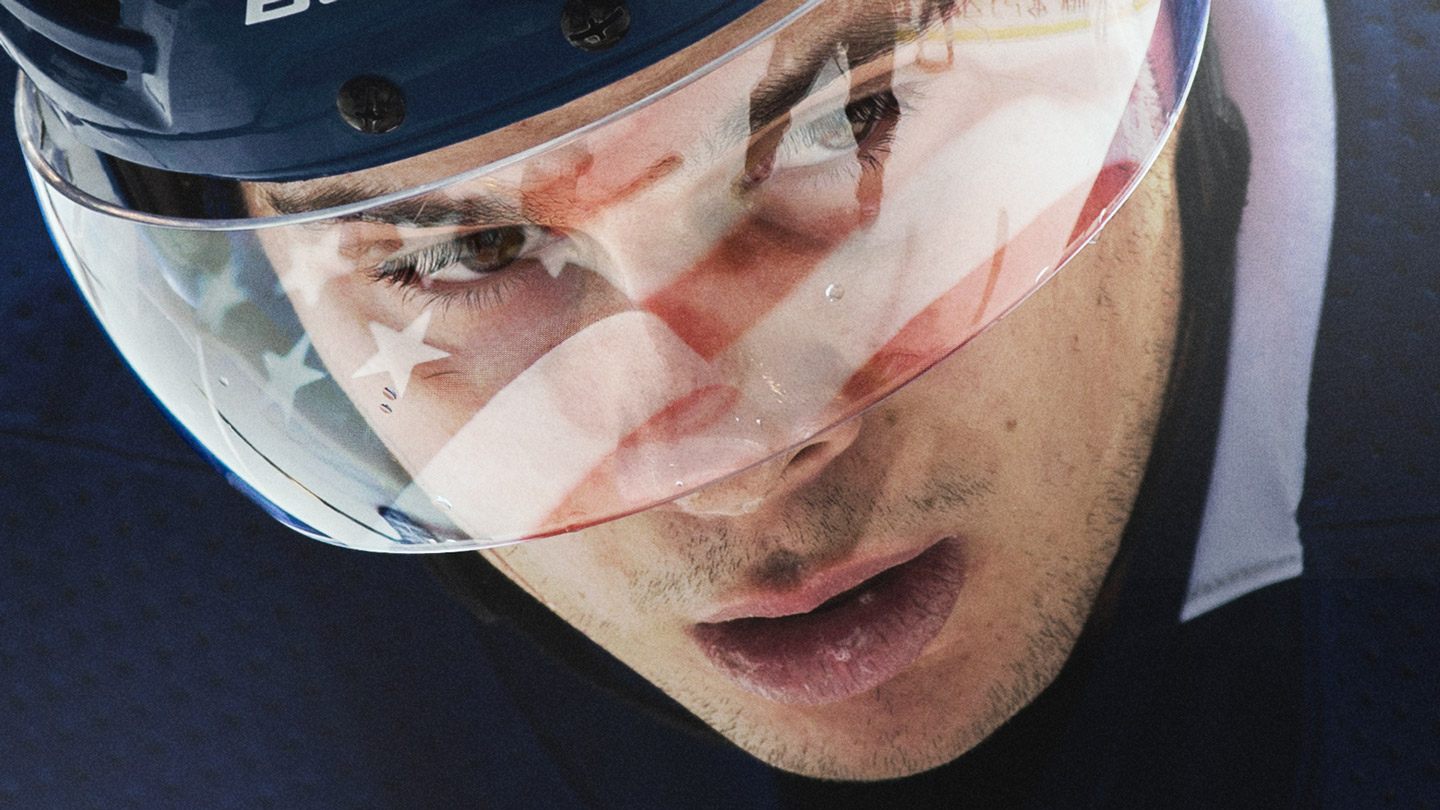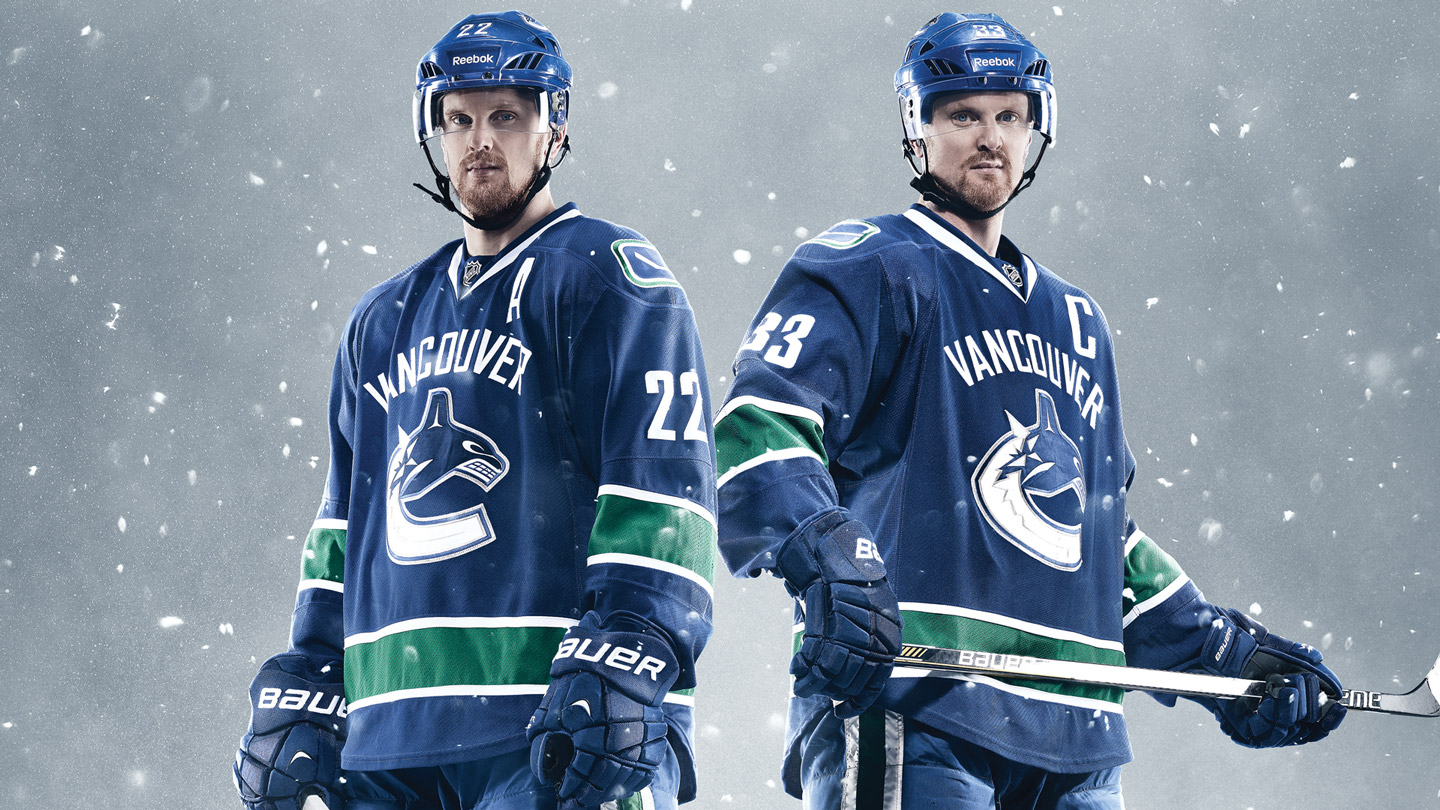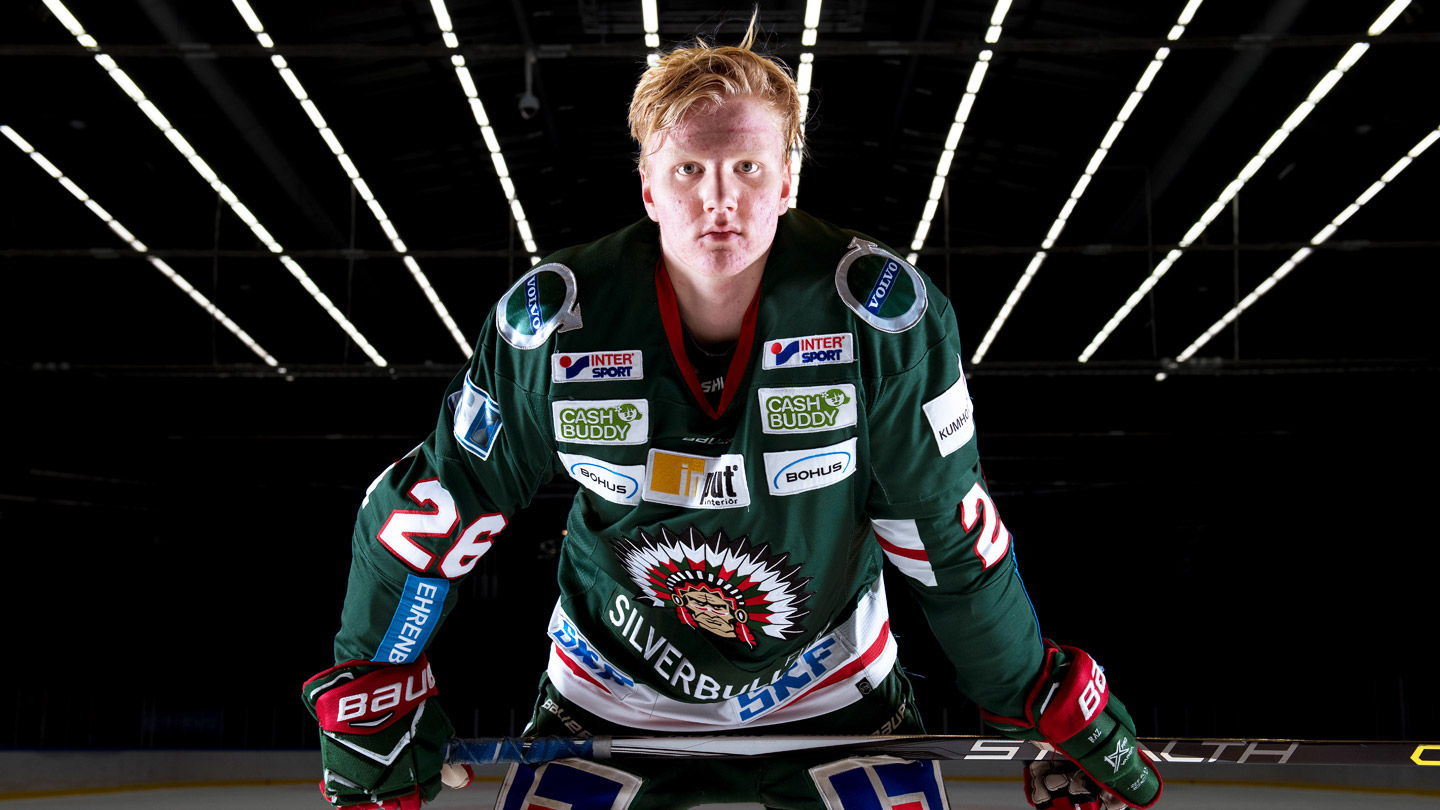Five years ago, Sportsnet senior writer Dan Robson travelled to Bathurst, N.B., to tell the story of “The Boys in Red,” a local high-school basketball team involved in a deadly automobile accident that changed the very nature of the town.
Jan. 12 marks the 10-year anniversary of the tragedy. In honour of the memories of those lost and those still impacted by the losses, we’re reaching back into our archives to tell the story of the accident and the aftermath.
Bradd Arseneau didn’t ask for any of this. Not the personal note from Steve Nash, the breakfast with Chris Bosh or the chance to star in his own Gatorade commercial. He could have done without the headlines declaring him a hero, the letters that poured in from across the nation. He’s grateful, of course. And, yes, he deserved every bit. But if Bradd could just close his eyes and wake up in a world where that van made it home, he’d give it all back.
Right now, though, the skinny, mop-haired, intensely private 20-year-old is just looking for a little bit of space so he can get his human sexuality paper on PMS done. He’s sitting at a computer in the corner of his parents’ dining room, and no one will leave him alone. “I could give him lots of great details,” his mom, Peggy, laughs. “I could too,” says his dad, Randy.
Bradd just shakes his head at the banter, pushes his bare feet into the floor and spins his chair back to the computer screen. In a couple of hours, they’ll all sit down together in a room filled with photographs of the teammates who basically grew up in this house, and whose laughter echoes in every story Peggy shares about the weekend sleepovers, paintball wars, goofy homemade videos and “Guitar Hero” marathons that made these boys a part of their family. The Arseneaus will sit with their memories as they watch a movie being broadcast across Canada about the team Bradd led to a provincial championship just a year after it seemed like the laughter would never return.
Tonight, Bathurst, N.B., falls silent. Throughout this idyllic seaside town, doors are locked and phones go unanswered as families huddle on their couches to watch a made-for-TV film that fictionalizes the very real tragedy that has come to define this place. Some don’t watch at all. A father braces for midnight, when his son’s birthday arrives again — and again his son isn’t there. In a near-empty house, a mother walks into her son’s bedroom, crawls under his covers and cries. Just blocks away, a coach’s burden remains a mystery.
It’s been five years since a school van carrying the Bathurst Phantoms senior boys basketball team collided with a freight truck on a slushy night, just minutes from home. The crash killed eight people — seven players and the coach’s wife. Four survived: two players, the coach, who was driving, and his 17-year-old daughter.
Reminders of the accident are everywhere in this friendly bilingual town, which hugs a harbour flowing into Chaleur Bay. A basketball net with photos of the dead encased in a glass blackboard sits near the site of the crash, passed by everyone who leaves and enters town. There are small tributes inside Bathurst High School, where a vault in the basement holds boxes of letters that arrived from around the world after the accident. Seven blocks of red granite form a circle in a new park dedicated to the Boys in Red, just down the street from the school, across from the post office that serves the 12,000 people who live here.
For the families and close friends of those who died, the day remains Jan. 12, 2008 — always there, stretching on. But at the same time, this town moves inevitably forward. New kids arrive to fill the jerseys of the boys who came before. Teams play on, win championships, raise banners and graduate into life beyond the school’s walls. The connection to the past grows weaker with each new season. Still, the Boys in Red linger, viscerally for some—the new reality of a fractured, haunted place. This is Bathurst five years after the moment everything changed.
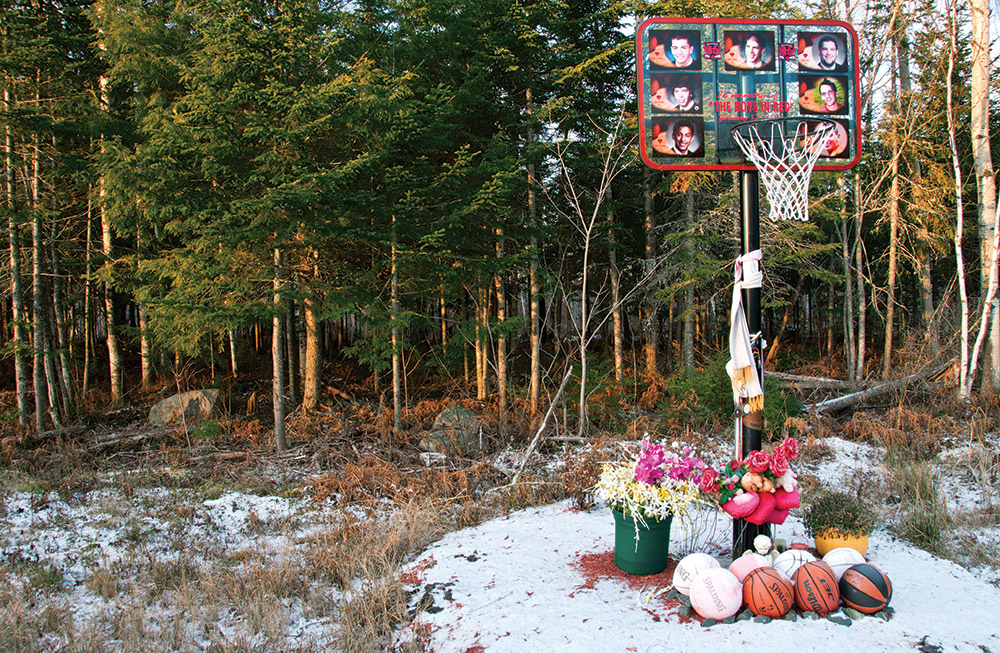
The Phantoms were famished after falling 75–65 to the Moncton High Purple Knights that Friday evening in 2008. The nine players who made the trip invaded the food court at the nearby mall after the game before climbing into the school’s white, 15-passenger van to make the three-hour trip to Bathurst. Freezing rain and slush covered the route home, and there was talk of staying the night in a hotel. But the Phantoms needed a solid rest in their own beds to be ready for the next day’s game against Riverdale, the division’s top team, so it was decided they’d press on.
The Moncton match was an embarrassing loss for Bathurst, who had beaten the Purple Knights by almost 30 points earlier in the season. The lackadaisical performance was a sore point for Wayne Lord — an X’s and O’s coach who’d led the Phantoms from the sidelines for more than two decades. Tim Daley fouled out in typical Tim Daley fashion — an undersized 5-foot-9 post player with overaggressive elbows. By the end of the game, most of the starters had joined him on the bench. They roared when Bradd, then a Grade 11 forward, chased down a Purple Knight on a break and blocked him emphatically. Lord hushed their cheers with a scolding glare.
Lord’s wife, Beth, was in the front seat of the van. She’d made the trip to Moncton with their daughter Katie to drop off a car for their eldest daughter, who lived there. Katie, a Grade 12 student at BHS, took a seat in the second row, next to a pile of gym bags. The boys raced to find their spots — Codey Branch, the team’s 6-foot-5 star centre, beat Tim to the back seat, where he sat next to his friends Justin Cormier and Nathan Cleland. Daniel “Big D” Hains, the team’s gentle giant, sat in the next row beside Javier “Latino Heat” Acevedo and 15-year-old Nikki Kelly, one of two Grade 10 students on the senior team. Nick Quinn, also in Grade 10, was in the row in front of them beside Tim and Bradd.
Bradd put in his earbuds and turned on a collection of soft songs on his iPod, hoping to catch some sleep — a bold move on a team prone to drawing health class diagrams on the faces of dreamers. The van would fall quiet for short periods as it rolled down the highway, then be interrupted by bursts of teenage laughter. Bradd rested his head back on the seat, half joining conversations, half drifting off as “Everlong” by the Foo Fighters played on his iPod:
If everything could ever feel this real forever. If anything could ever be this good again.
About 45 minutes from home, the boys started calling their parents to let them know when the team would arrive at the local McDonald’s, their usual drop-off spot. There was loud music playing — Codey and his dad, Dale, could hardly hear each other; the conversation was short and ended without the brief “love you” that usually replaced “goodbye.” At midnight, the van erupted with a chorus of “Happy Birthday” for Nick, now 16. The song echoed in John Cleland’s ear through the phone as his son, Nathan, told him they were almost home.
Bradd closed his eyes, leaning his head back, one earbud out. Tim and Nick argued with Katie, saying figure skating isn’t really a sport.
12:05 Falling snow rushed against the windshield of the van as it cruised at a little more than 70 km/h.
12:06 The van passed the “Welcome to Bathurst” sign on the side of icy Route 8.
12:07 Wayne saw the lights of a freight truck peek over the edge of the hill just before the cutoff into town. The van hit the slushy gravel on the right shoulder and then swerved left, sliding sideways into the opposite lane. Tim shouted. Bradd opened his eyes.
12:08 White lights filled the night.
The van was ripped in half, a twisted wreck in the ditch. The freight truck was sideways, turned from a desperate attempt to avoid the crash. Bradd lay on his back, half in the van, half out, looking into the midnight sky. Tim couldn’t feel the pain of his broken pelvis or his shattered wrist. Just frantic adrenalin. He lay in the snow. Katie was in front of him. He grabbed her hand and found Bradd by the van. “I love you man,” Bradd said. Tim held them both and prayed:
Our father who art in heaven, hallowed be thy name. Thy kingdom come. Thy will be done…
Not a religious kid, but it was the only help he could find. The driver of the 18-wheeler covered Bradd’s shoeless feet with a sweater from his bag. Tim led Katie to a truck that pulled over to help. They sat in the back and Tim used the driver’s cell to call his parents: “There’s been an accident. Meet me at the hospital.” He lay back in the warmth, feeling safe — telling himself it would all be fine. And then the pain hit: “Shit. I’m not all right.”

The parents gathered in a waiting room, a collection of lives about to be shattered forever. The nurses tried to answer their frantic questions, but had little information. One had a name written on a yellow piece of paper. She asked for Bradd’s parents. Fast news is always the worst, they thought. But they were wrong.
The principal showed up. The superintendent. The school counsellor. Classmates crowded outside, more and more packing in, frantically trying to find out which boys were alive and which were dead. Dale Branch asked the nurse with the yellow paper to check for his son’s name: “Codey Branch,” he said, pointing to the paper, as though he could will it there. The nurse just shook her head. “When are the rest of the ambulances coming in?” asked Ginette Emond, Codey’s mom, bewildered that only a few had arrived. “They are all in,” the nurse replied softly, hiding the quiver in her voice. “Then send more!” Ginette said. “Why don’t you send more?” The nurse paused. “I’m sorry. All the ambulances are in,” she said. “The coroner is on the scene.” But Ginette couldn’t understand. “You have to send more ambulances,” she cried. “Send more. Please, send more.”
It took two hours before the names of the dead were read by the coroner — a man who refereed some of the boys when they were younger and who played basketball against them during school alumni games. His hands shook and he tried to look away from the parents. At the site of the crash, he had walked up to each of the police officers and firefighters who had stood beside the bodies until he arrived. He had crouched beside each and declared them dead. One by one, he read their names. With each, parents collapsed and wept.
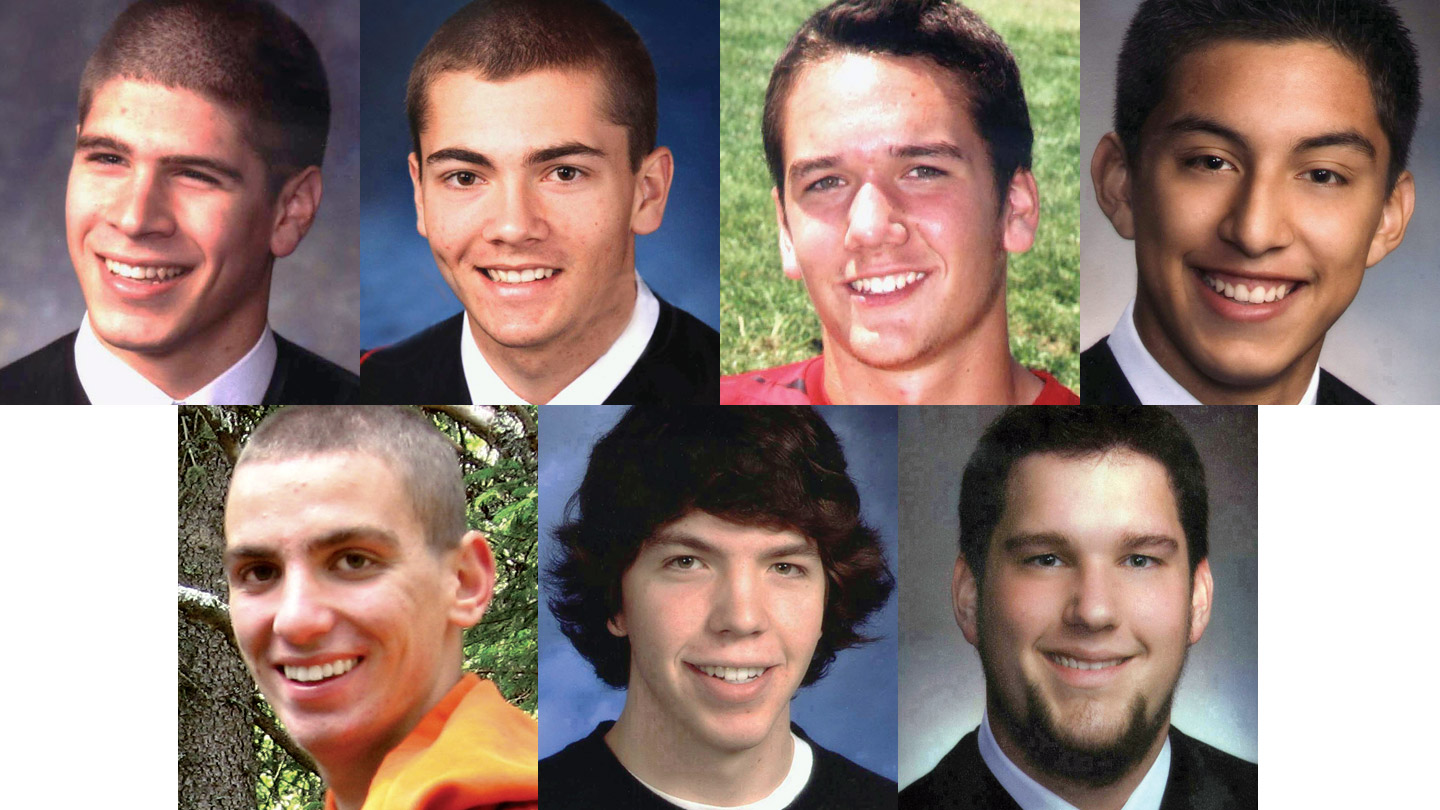
Krista Quinn and Ginette Emond sit around a dining room table, laughing. Partly because it helps keep them from crying, and partly because of how odd it is to reflect on what the past five years have been like. During the year after the accident, Krista pulled a baseball cap low over her forehead to disguise herself when she went to her local grocery store, unable to bear the sympathetic sea of people that parted as she entered.
Ginette found herself unable to shop for groceries at all — falling into a fit at the sight of clam chowder, one of Codey’s favourites. She’d leave her cart and come back hours later to claim it. Krista tried baking her oatmeal chocolate-chip cookies, but she kept waiting for Nick to bound up the basement stairs yelling, “Hey, cookies!” and snag one fresh out of the oven. Ginette kept replaying her argument with Codey about allowing him to transfer from the area’s French high school to Bathurst in Grade 12 to play for the better basketball program. Krista found herself trying to garden, but would get stuck staring at a single flower, unable to look away.
That year, news of the new basketball season was difficult to take — the team and the school rolling on without their boys. Bradd was the only player to return. The Phantoms played down a division, but every game seemed to carry the weight of a playoff match. And for Krista, at least, it became a strange sort of comfort. “Nick and Nikki both would have been on that team,” she says, meaning her son and Nikki Kelly, the other Grade 10 student from the Boys in Red. “They would have been starters.”
The new Phantoms persevered despite the distraction of national media attention and the stress of watching their new coach, Alan Doucet, suffer a heart attack during practice in the days leading up to the regional finals. When Bathurst made it to the provincial championship game, with Doucet recovering in a hospital bed, the town was thrust into the spotlight again.
Krista made the trip to Fredericton as though her son were on that floor. Ginette came, too, and they stayed at the same hotel as the team. They sat in the stands, cheering and crying, as Bradd led the Phantoms with 25 points and 21 rebounds to win the AA championship. Afterwards, Krista and Ginette lined up in the hallway of the hotel with the other parents and friends, giving the players high-fives. “Everyone was just ecstatic,” Ginette says. “For me, it was a mix; it was everything all at once — there were three teams on that court. You could feel it.”
On the drive back to Bathurst, both moms noticed the signs and billboards — “Go Phantoms Go” — which had now replaced the “Rest in Peace Phantoms” signs that had hung in place for nearly a year. “I remember feeling sad,” Krista says. “It was just weird; I was thinking, it’s not all about us anymore.” Not that she wanted it to be — but she realized that time would move forward, and no amount of joy could fully pull her with it.

Isabelle Hains answers the phone with a soft Maritime accent. “I said all I could on that.” She hangs up on another reporter. They’ve been calling all week about the movie she vehemently opposed. She walks out of her kitchen, past a white electric candle with a red ribbon that glows faintly in the window. Isabelle never turns it off. It’s as important to her as the photographs that line the walls of her living room, forming a giant collage.
Daniel’s face is everywhere, always with the same grin, his patchy goatee tracing a U on his round baby face. A family portrait taken the December before the accident hangs in her hallway. Isabelle had flowing red hair and soft, round cheeks then. Her cheeks are thin and her eyes are tired now. The lines of her face slope, like her shoulders, under an unseen weight.
Last night, while the movie aired, Isabelle walked down the stairs to the basement of her bungalow and pushed open the door to Daniel’s bedroom. It remains just as he left it — Jimi Hendrix and Metallica posters still taped to the wall. The guitars that used to blast his band’s practices out to the street are packed in cases in the corner. The wooden dresser is still covered in smiley-face and Batman stickers, and remains cluttered with a teenage boy’s essential toiletries: shaving cream, Axe deodorant and a bottle of Febreze. The suits and jerseys she sewed extra fabric into to make sure they fit still hang in the closet.
Daniel’s black Everlast punching bag leans in the corner, with his grey and red size-13 Reebok basketball shoes resting on top. It’s the same pair he lent to Codey Branch when the star centre forgot to bring his own to an away game against James Hill High in Miramichi. Daniel sat on the bench in his socks while Codey played. That’s just the kind of kid he was — and besides, basketball wasn’t even his sport. The scuffed-up rugby cleats on his bedside table were less likely to be shared. It was his first year on the basketball team. “I’m going to play every sport this year,” he told Isabelle in the fall of his Grade 12 year. She stood in his room and remembered the way he used to wrap his massive arms around her — hugs so big they made her feel like a little girl.
Today, she sits on the couch and flips through a folder that documents her five-year cross-country campaign for school boards to have tighter regulations for travel and to have 15-passenger vans banned outright. She’s memorized the details of the white van’s safety inspections — she can tell you just how bald its all-season tires were and where the rust on its frame had festered.
Isabelle’s found other bus drivers who were on the same route that night but pulled over in the freezing rain. She can rhyme off all 24 safety recommendations for team travel taken from the findings of an inquest into the accident in May 2009. She launched a website with two other mothers of the Boys in Red. While the others have become less involved, Isabelle’s efforts have cost her close to $30,000. “I’m not going halfway with this. Even if it takes another three, four years or longer,” she says. “I’m getting justice for my son.”
Still, Isabelle realizes what she’s really looking for is gone. She can’t bring him home. “I can’t say it’s helping me any,” she says. She grew up in this town — went to Bathurst High herself — but now she only feels comfortable grocery shopping early in the morning or late at night. She feels the stares, the angst of a town that seems anxious to move on and is tired of her constant fight. Her husband, Allan, left nine days before the accident for a job in Fort McMurray, Alta. She told him the news on the phone from the hospital and heard him cry out in pain. He’s rarely been back since. “A loss of a child can bring a family together or make it drift apart,” she says. Last summer, the couple decided to separate.
The Christmas decorations have stayed boxed up since Daniel died. Isabelle hasn’t put up a proper gravestone yet; she can’t find the perfect words. And she can’t go near the school she drove him to that morning, calling him back to the family’s grey minivan because he’d forgotten his basketball gear in the back seat. “Be careful tonight,” she said. “They’re calling for bad weather.” “Don’t worry,” Daniel told her. “If it gets bad, we’re going to stay there.”
There’s a “For Sale” sign on Isabelle’s front lawn — the only way she can leave this haunted place behind. But then, she says, that seems unlikely. “You can’t deal with the death of your son. There’s nothing you can do,” she says softly through tears. “The pain is always there. It ruins your life.”
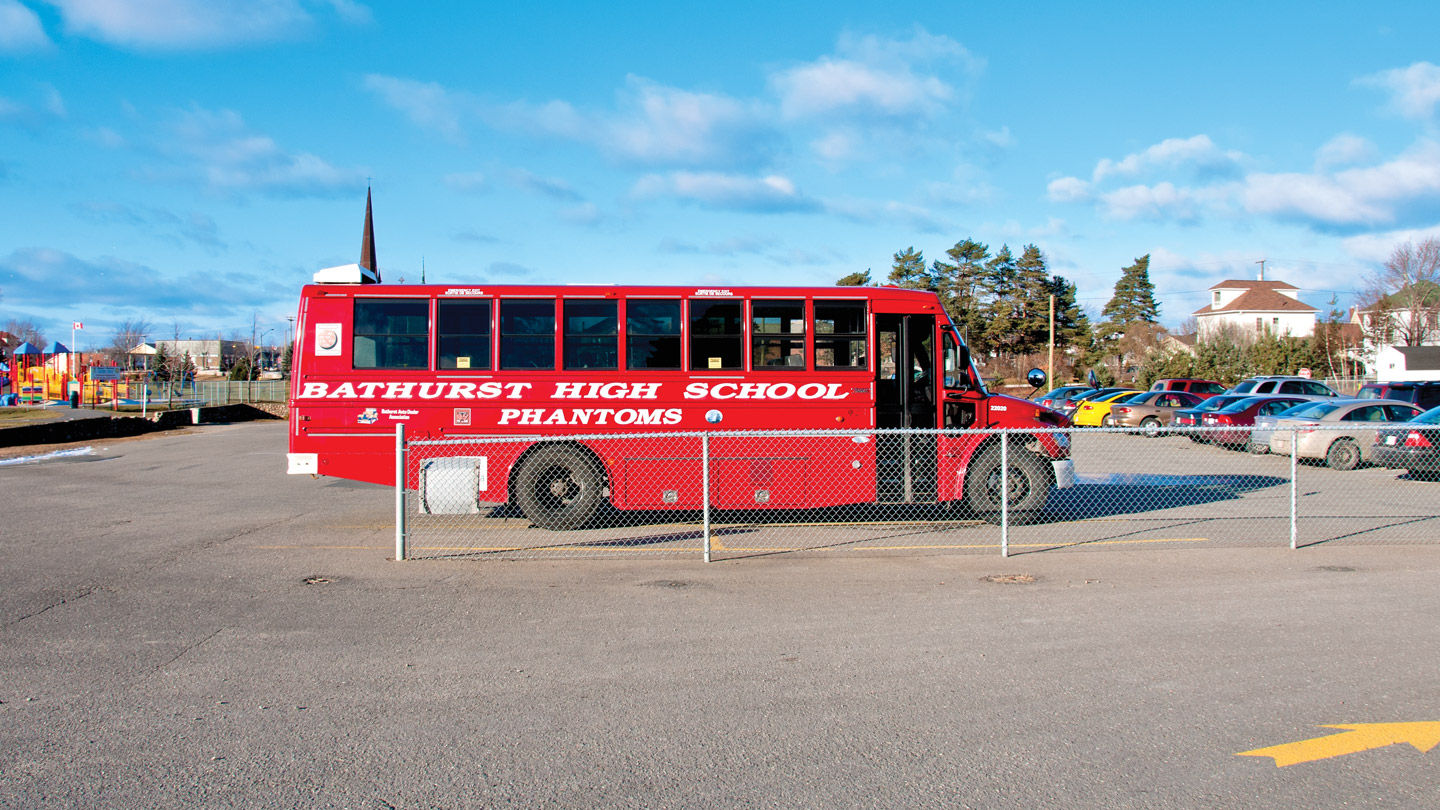
Grief manifests in many ways. It can consume you, it can change you. Inevitably, it becomes part of you. And, eventually, you learn to cope, carrying that void with you in your own broken way. You can see it all over Bathurst.
John Cleland sits in an empty coffee shop, flipping pages of a photo album, travelling through memories of his old life. It’s nearly freezing, but he’s wearing shorts and an Under Armour T-shirt. His grey handlebar moustache twitches when he talks. In old Christmas portraits of the family dressed as the Addams Family or the Blues Brothers, John’s face is thicker, his moustache a dark brown.
Over the course of several coffees, John shows photos of Nathan in action on volleyball and basketball courts. He had the best vertical in the school, even though he was a 5-foot-9 setter and point guard — and no one in the province could touch his speed on the court or on a soccer pitch. John shares stories of school projects, camping trips, Nathan’s devotion to the Montreal Canadiens. He recalls the Grade 9 student who came up to him after the accident and told him that Nathan always went out of his way to talk to him during lunch, when he was sitting alone. And he laughs when he thinks of the Habs lunch box Nathan still carried to school in Grade 12. Probably would have taken it with him when he graduated and studied to be a firefighter.
An English teacher at Bathurst High, John knew every boy on the team. He can still picture them in his classroom; can see them in the halls. And even though he and his wife are close friends with the Arseneaus, they still can’t visit their home because it’s too painful. But John will always take time to talk about his son, to dream of what he would have become. “It’s when people don’t talk about them that it hurts,” he says. “It’s as if they didn’t exist, and that’s not true.”
He still finds himself sitting in Nathan’s bedroom, which, like Daniel’s and many of the others’, is untouched from the day he died. And every spring he makes his way to the memorial that marks the site of the accident. He puts fresh red mulch at the base of the basketball net he and the other fathers put there, laying a three-foot foundation of cement beneath. They tidy the medals left by passing teams and clear out the basketballs that pile up in front — always leaving just eight in a neat row.
They keep the memory alive, John says, with all the joy and pain that brings. Slowly, he says, he and his wife are learning to let go of the physical reminders. A few months ago, they burned Nathan’s Phantoms jacket, after carefully removing the “bench warmer” patch from the sleeve and the ironic cheerleading badge he wore on the chest. “We’re considering burning it all,” John says. “He would have liked that — warrior style.”
John glances to his right as a couple walks into the coffee shop, and his face goes white. “That’s Wayne right there. The coach,” he says, pausing. “It’s the first time I’ve seen him in probably two years.”
Wayne Lord is with his new wife, whom he married this year. They walk to the counter, buy a coffee and walk back out the door. The coach glances back at John briefly without saying a word. John says he holds no anger toward the coach, and can’t imagine what he’s gone through. “I don’t know how it is for him to wake up every day under those circumstances,” he says quietly.
Wayne Lord has never spoken publicly about the accident, aside from participating in the coroner’s inquest. “Look, I can’t,” he says over the phone shortly after stopping in the coffee shop. “I haven’t said a word and I’m not about to. I’m sorry. I’m going to stay true to myself. I made that decision a long time ago — and I’m not going to change it. Thank you.”
More than 700 people showed up for Beth Lord’s memorial service, held separately from the boys’. She was remembered as a dedicated teacher with nearly three decades of experience who filled the halls of the local elementary school with the music of the youth choir she led. But when it comes to the memorials in Bathurst, including the new park opening in the spring, the mention is always of the Boys in Red, not Beth. A friend said it was Wayne’s decision to keep her tribute separate — a private memory, honoured quietly.
Despite his silence, the coach has kept his connection to the Phantoms. He’s often in the stands at local games. Tim Daley, who recently became a police officer, ran into him at Walmart a few weeks back. They stood in the aisle and chatted for nearly half an hour, filling in the gaps from when they saw each other last. Tim remains good friends with Wayne’s daughter, Katie, who was his classmate. He and Wayne have met several times over the years — sharing a beer, talking basketball — but they never talk about the past. “It’s not his fault. It’s nobody’s fault — it’s just a bad thing that happened,” Tim says. “He knows that. I hope he knows, anyway.”
Tim often stops by the Arseneaus’ house when he comes down to Bathurst from his home in Jacquet River, 30 minutes north. And sometimes when he leaves, he drives down the road to Notre Dame du Rosaire Catholic church, where his seven teammates are buried in a row. He thinks back to that night in the hospital, the morphine numbing his pain, denial keeping his hope alive. “It can’t be that bad, it can’t be that bad,” he thought, over and over again. “They’ll be fine. This kind of stuff doesn’t happen to us.”
He remembers the moment his dad sat down beside him in his hospital bed and told him seven of his friends were dead. And the words John Cleland said when he walked in the room that day: “We’re so happy you’re still here.” Tim stands by their graves and remembers them all: Javier, Codey, Nathan, Justin, Daniel, Nikki and Nick, the names all etched on the band of his watch and their photos lining the inside of his police cap. And he thinks of Beth, too — buried across town, in a cemetery on the edge of a field, with fresh blue and white flowers and an angel sitting on top, with a silver heart ornament resting on it: “Beth, Mom.”
When he leaves this month for northern Alberta to begin his new post with the RCMP, Tim will carry them still. “The bonds you make on a sports team, the life lessons — you don’t really know how important those moments are until they’re gone,” he says. “I don’t regret being part of this group. I’d do it all over again.”
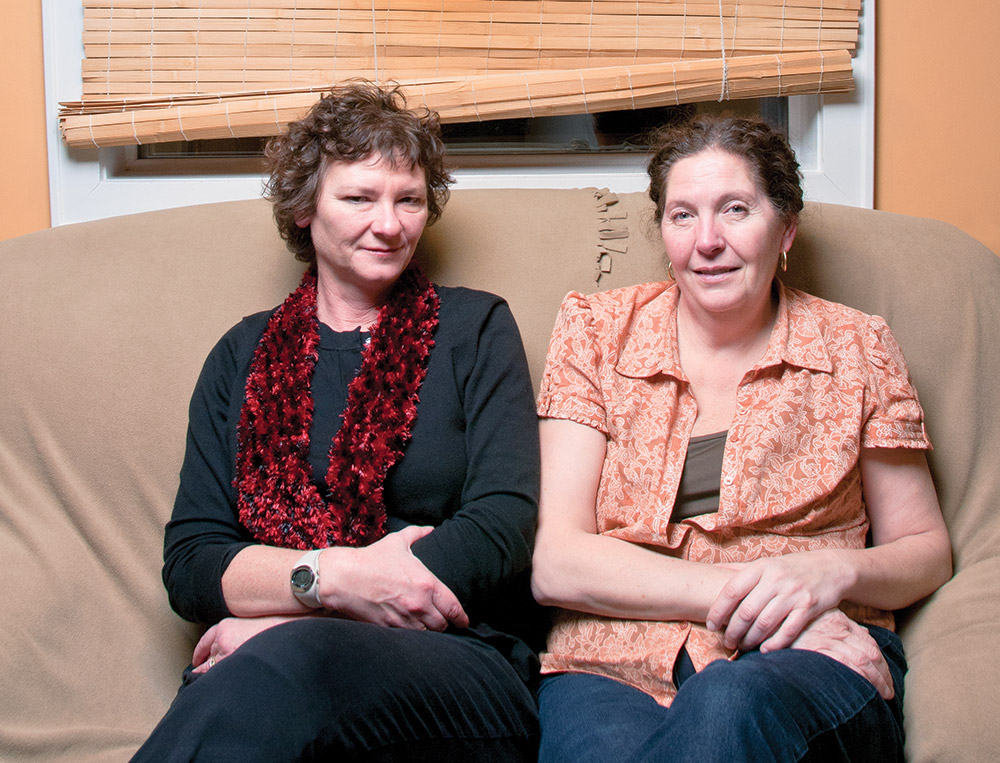
Bradd Arseneau hasn’t played basketball since leading Bathurst to a provincial title a year after the accident. “I dedicated that year to the Boys and then said, ‘I’m just going to hang it up,’” he says. The movie, based on that team, flickers through the Arseneaus’ dark living room lined with photos of the team. Justin and Nathan are in almost all of them — they were like siblings to Bradd and his older brother, Cal, who had quit the team before the accident.
As far as Bradd’s concerned, the movie is fine because it helped him and his family and others in this community work through some scars. (Krista Quinn and Ginette Emond played minor roles in the film. Noah Quinn, Krista’s youngest son, who helped Bathurst High win the provincial AAA championship in 2011, played on the team that faced the fictionalized Phantoms in the final.)
Throughout the movie, Bradd gets up to check Facebook, as a steady stream of posts of support appear on his wall. He stays up late into the night, sitting at the computer in the dining room, finishing his paper on PMS. He doesn’t sleep well anyway — it’s the quiet moments that bring it all back for him. He recently emailed himself a quote he’d heard. “It’s about boxing up vulnerable parts of yourself and just kind of tossing them away,” he says. “You have to find them again at some point or another. To fully overcome something, you have to go back and pick up those parcels. That’s what some people do. Others think you can carry it forever.”
Like so many people connected to the Boys in Red, Bradd carries those parcels with him. And just like them, he’s still learning how to unpack the things he’s boxed. Throughout Bathurst there are untouched bedrooms, unfinished graves, unbaked cookies — and a day that stretches on, never ending, never changing.
Early the next morning, Peggy drives Bradd back to Fredericton, where he’s in his final year at the University of New Brunswick. He doesn’t have his driver’s licence yet; had just turned 16 a month before the accident. They leave Bathurst along Route 8 — like they always do — passing the roadside memorial. He sleeps for most of the ride after that. Maybe he unpacks something along the way. Hard to know, even for him — these things don’t come with ribbons. Maybe he’ll sort through another box this Jan. 12, when he slips quietly into the cold and stares up at the night sky, as he does every year on that day. There, alone, he finds his friends in the stars and speaks to each of them. “As foolish as it sounds, it helps me get through it,” he says. “I’m happy when I’m out there talking to them — they’re with me no matter what. That’s something I’ll carry for the rest of my life.”

